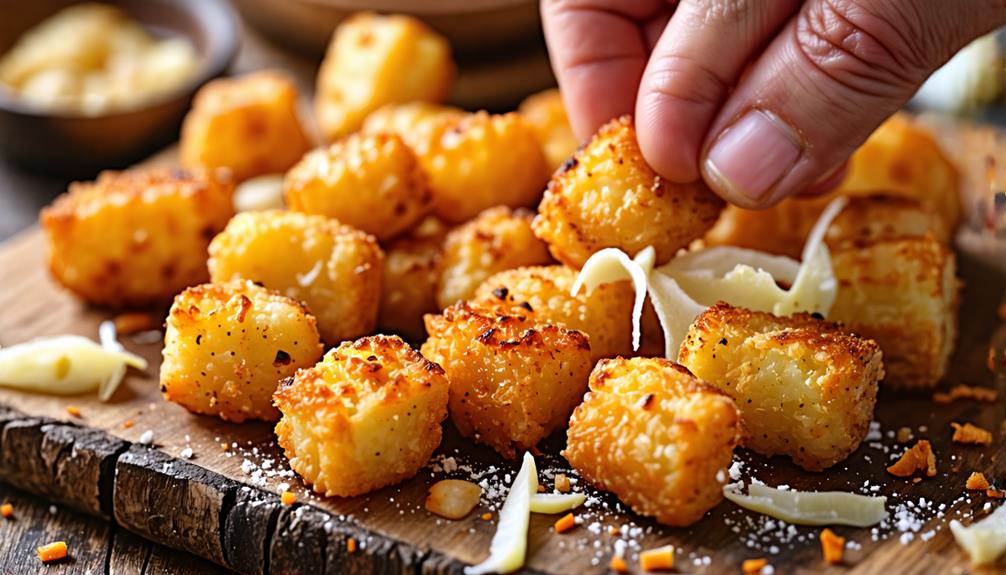You might think of Tater Tots as just another tasty snack, but there's more to their story than meets the eye. These crispy potato nuggets were born out of necessity and ingenuity during a time when food waste was a pressing concern. The Grigg Brothers, founders of Ore-Ida, faced a dilemma with leftover potato scraps from their French fry production. Instead of discarding these valuable remnants, they saw an opportunity to create something new and exciting. What they came up with would not only solve their waste problem but also revolutionize the frozen food industry. The question is, how did they do it?
Key Takeaways
- Tater Tots were created by the Grigg brothers in the 1950s to utilize potato scraps from French fry production.
- The invention was inspired by a no-waste philosophy stemming from the creators' experiences during the Great Depression.
- Potato scraps, initially used as livestock feed, were repurposed into a popular snack food.
- The process involved chopping scraps, mixing with flour and spices, and extruding the mixture before blanching and frying.
The Potato Scrap Solution

In the 1950s, the Grigg brothers turned a problem into profit by transforming potato scraps into the beloved snack we now know as Tater Tots. Their innovative approach revolutionized food production and sustainability in the frozen food industry. You might be surprised to learn that these potato scraps were once considered waste and used as livestock feed.
The Griggs' no-waste philosophy, influenced by their experiences during the Great Depression, led them to seek a solution. They developed a process to chop the scraps, mix them with flour and spices, and extrude the mixture into logs.
After blanching and frying, Tater Tots were born. This ingenious method not only reduced waste but also created a new consumer product.
From Byproduct to Beloved Snack
The Grigg brothers' ingenious solution to potato waste didn't just reduce scraps; it sparked a culinary revolution that would transform America's snack landscape. Tater Tots, born from a waste reduction strategy, quickly evolved into a beloved staple of American cuisine. By repurposing potato scraps that would've been discarded, the Grigg brothers created a popular product that captured a significant share of the frozen food market for Ore-Ida.
You might be surprised to learn that Tater Tots initially faced consumer skepticism. However, clever marketing as a trendy and economical snack helped overcome these doubts.
The success of this innovative approach to food waste demonstrates how repurposing byproducts can lead to unexpected triumphs. What started as a simple solution to reduce waste in the 1950s has become an enduring icon in the world of snacks, proving that sometimes, great ideas come from unlikely sources.
Ore-Ida's Waste-Reducing Innovation

Ore-Ida's creation of Tater Tots brilliantly showcased how a waste-reducing strategy could revolutionize the food industry. The Grigg brothers, faced with an abundance of potato scraps from French fry production, transformed this food waste into a beloved snack product. Initially sold as livestock feed, these scraps found new life through innovative practices.
You'll appreciate how Ore-Ida's approach to processing potato remnants involved chopping, extruding, and blanching them. They even repurposed a prune sorter to enhance production efficiency. This ingenious method not only reduced waste but also created a profitable product.
Conclusion
You've seen how a simple idea to reduce waste transformed the food industry.
By repurposing potato scraps, the Grigg brothers created a snack that's become an American icon.
Tater Tots aren't just delicious; they're a demonstration of innovative problem-solving.
Next time you're enjoying these crispy bites, remember you're not just eating a snack, you're participating in a legacy of waste reduction and culinary creativity.

Leave a Reply